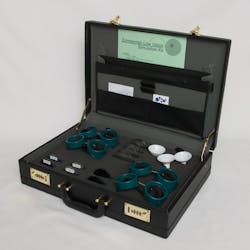Palm Tran trains bus operators with new visual impairment simulation technology
Accessibility is a vital element of public transportation. Palm Tran’s Direct Outreach Worker Nicole Fincham-Shehan notes that though people often do their best to accommodate people with disabilities, they often do so from a place of ignorance.
“For example, a lot of times people feel like when they are working with someone who is blind that they have to raise their voice at them to get their message across. They may feel that that is accommodating, but that isn’t really what accommodation means,” said Fincham-Shehan.
To raise the standard for providing service to its customers, Palm Tran is incorporating new state-of-the-art simulator technology into its bus operator training curriculum. The technology is called the Zimmerman Low Vision Simulation Kit and comes with goggles and interchangeable filters that simulate various degrees of visual impairment. The kit, designed by the company Learning, Sight, and Sound Made Easier, allows bus operators to experience what it is like to live and try to accomplish tasks with different levels of visual limitations to include total blindness. As part of their six-week training curriculum, operators will put on goggles that can be programmed to simulate Cataracts, Retinitis Pigmentosa or tunnel vision, Macular Degeneration total blindness and other degrees of visual impairments.
Though Palm Tran remains one of the transit providers whose entire fleet is completely ADA accessible, the agency aims to ensure operators appreciate the need for engaging riders who have visual impairments or are blind when they are boarding and exiting the bus, finding their seats and locating their stops.
Palm Tran Executive Director Clinton B. Forbes believes that the inclusion of the simulator into the training curriculum is in harmony with Palm Tran’s focus on being courteous to the public.
“We need our operators to be proactive when communicating with our riders. That can mean anticipating that they may need an accommodation and listening to the rider, when they tell us what they need to ride safely,” said Forbes.
Fincham-Shehan maintains that the simulator is a unique way for Palm Tran to communicate a simple, crucial message.
“This simulator is an innovative and exciting way to get the point across that there are different levels of visual impairments, and even if people are visually impaired, we don’t all see the same thing at the same time,” said Fincham-Shehan, who herself is blind.
